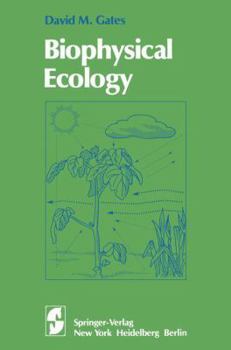Biophysical Ecology
The objective of this book is to make analytical methods available to students of ecology. The text deals with concepts of energy exchange, gas exchange, and chemical kinetics involving the... This description may be from another edition of this product.
Format:Hardcover
Language:English
ISBN:038790414X
ISBN13:9780387904146
Release Date:January 1980
Publisher:Springer
Length:611 Pages
Weight:2.75 lbs.
Customer Reviews
1 rating
A fascinating book
Published by Thriftbooks.com User , 21 years ago
I am a physicist, not an ecologist, but still found this book fascinating. It deals with the interface between physics and biology, focusing primarily on heat and mass transfer in living organisms. A large section of the book is devoted to radiative heat transfer, which is the dominant heat transfer mechanism in many every day situations. Gates has many interesting examples sprinkled through the text. For instance, there is an interesting discussing of evaporative cooling of birds and mammals, including the relative importance of panting versus sweating. An accompanying graph, from the author's research, shows the evaporative losses of a ground squirrel as a function of ambient temperature. There are also formulas given for estimating evaporative losses. There are many other interesting discussions (evaporation losses of lakes, body temperatures of birds, skylight irradiation on sloped surfaces, etc.). Lots of interesting stuff. The book requires knowledge of trigonometry. It would also be very helpful to have had exposure to heat transfer concepts, especially radiative heat transfer. Without that, book may be tough going for some. Overall, I found the book well written and very enjoyable





